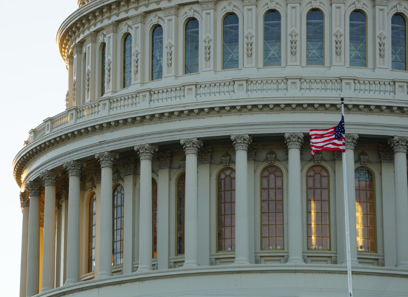Be aware of 7 Cybersecurity Predictions for 2025 shaping the future.
Wiki Article
Future-Proof Your Organization: Key Cybersecurity Predictions You Required to Know
As companies challenge the speeding up rate of digital improvement, recognizing the evolving landscape of cybersecurity is critical for long-lasting durability. Forecasts suggest a considerable uptick in AI-driven cyber risks, together with increased regulatory scrutiny and the critical change in the direction of Zero Count on Architecture.Increase of AI-Driven Cyber Risks

One of the most worrying growths is using AI in developing deepfakes and phishing schemes that are extremely persuading. Cybercriminals can make audio and video clip material, posing executives or trusted people, to manipulate sufferers right into revealing sensitive information or authorizing illegal purchases. Furthermore, AI-driven malware can adapt in real-time to evade detection by traditional protection actions.
Organizations have to acknowledge the immediate requirement to strengthen their cybersecurity frameworks to fight these advancing threats. This includes investing in advanced hazard discovery systems, promoting a society of cybersecurity awareness, and applying durable incident reaction plans. As the landscape of cyber dangers transforms, aggressive measures come to be vital for protecting delicate data and keeping company stability in a progressively digital world.
Enhanced Emphasis on Data Privacy
Exactly how can companies effectively navigate the growing focus on data privacy in today's digital landscape? As governing frameworks progress and consumer expectations increase, services should focus on durable information personal privacy methods. This entails taking on thorough data governance plans that ensure the ethical handling of personal details. Organizations needs to carry out normal audits to analyze conformity with laws such as GDPR and CCPA, identifying potential vulnerabilities that might result in data violations.Investing in employee training is essential, as team recognition directly influences data defense. In addition, leveraging technology to boost data safety and security is essential.
Collaboration with lawful and IT groups is essential to line up data privacy efforts with organization purposes. Organizations ought to additionally engage with stakeholders, including customers, to communicate their dedication to information privacy transparently. By proactively dealing with information personal privacy problems, services can construct depend on and boost their reputation, eventually contributing to long-term success in an increasingly scrutinized digital environment.
The Change to No Depend On Design
In action to the evolving threat landscape, organizations are increasingly embracing Zero Trust fund Style (ZTA) as an essential cybersecurity method. This strategy is asserted on the concept of "never trust, constantly verify," which mandates constant confirmation of individual identities, gadgets, and information, despite their location within or outside the network boundary.Transitioning to ZTA involves executing identity and accessibility administration (IAM) options, micro-segmentation, and least-privilege accessibility controls. By granularly controlling access to resources, companies can minimize the risk of expert hazards and minimize the effect of exterior breaches. ZTA encompasses robust tracking and analytics capacities, enabling companies to spot and react to abnormalities in real-time.

The change to ZTA is also sustained by the raising fostering of cloud services and remote work, which have actually expanded the attack surface (7 Cybersecurity Predictions for 2025). Typical perimeter-based safety and security models are insufficient in this new landscape, making ZTA an extra resistant and flexible framework
As cyber threats continue to grow in sophistication, the adoption of Zero Trust concepts will certainly be vital for companies looking for to secure their possessions and preserve governing compliance while making certain company connection in an unsure setting.
Regulatory Changes on the Perspective

Future laws are anticipated to deal with a variety of issues, consisting of data privacy, violation notification, and case reaction procedures. The General Data Protection Guideline (GDPR) in Europe has actually set a criterion, and similar structures are arising in various other areas, such as the USA with the suggested government personal privacy legislations. These laws often impose stringent charges for non-compliance, stressing the requirement for companies to prioritize their cybersecurity steps.
Additionally, markets such as money, medical care, and vital infrastructure are likely to encounter much more rigorous requirements, showing the sensitive nature of the information they take care of. Compliance will not simply be a legal responsibility however a critical element of structure count on with customers and stakeholders. Organizations has to stay ahead of these adjustments, incorporating regulatory requirements right into their cybersecurity approaches to guarantee resilience and shield their possessions successfully.
Relevance of Cybersecurity Training
Why is cybersecurity training a critical element of an organization's defense method? In a period where cyber hazards are increasingly advanced, companies need to acknowledge that their staff members are often the initial line of defense. Efficient cybersecurity training gears up staff with the knowledge to determine prospective threats, such as phishing strikes, malware, and social engineering tactics.
By cultivating a culture of protection recognition, companies can dramatically minimize the risk of human mistake, which is a leading reason for information breaches. Routine training sessions make sure that workers remain informed regarding the most up to date hazards and best practices, therefore enhancing their capacity to respond properly to cases.
Furthermore, cybersecurity training promotes conformity with regulative demands, decreasing the danger of lawful repercussions and punitive damages. It additionally encourages workers to take possession of their role in the company's security structure, bring about a proactive rather than reactive strategy to cybersecurity.
Conclusion
To conclude, the developing landscape of cybersecurity needs aggressive actions to attend to emerging risks. The rise of AI-driven assaults, coupled with increased data privacy concerns and the transition to No Trust fund Style, requires a thorough technique to security. Organizations should stay attentive in adjusting to regulatory changes while prioritizing cybersecurity training for workers (cyber resilience). Stressing these techniques will not just improve organizational resilience however also protect delicate info against an increasingly advanced array of cyber threats.Report this wiki page